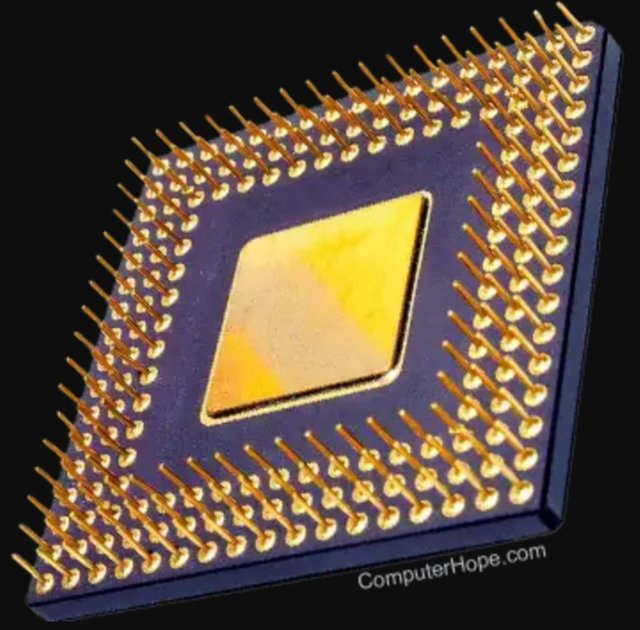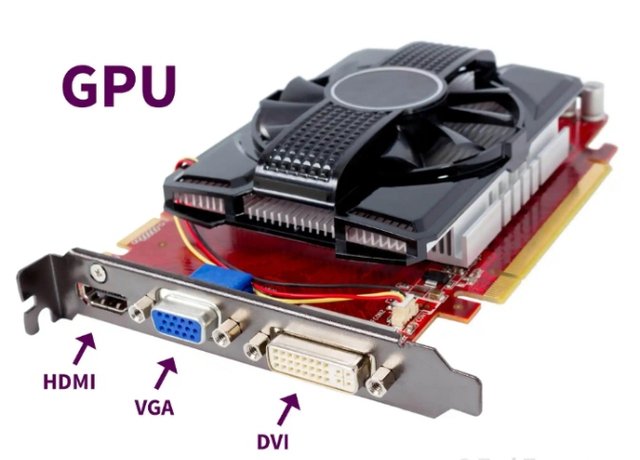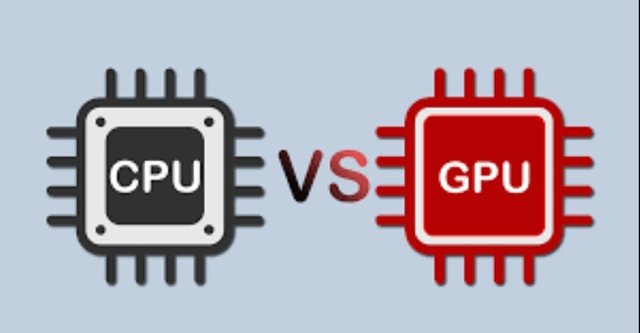welcome back to my blog,
We are all familiar with CPU ( central processing unit)which is known as the brain of the computer,and critically handles mostly the processing functions of a computer while GPU(Graphics processing unit)which is known mainly for 3D rendering, and can do more processing simultaneously.
Alright, in this blog, we will know about CPU,why it may be used for desktop processing,and GPU, why it may be seeing power on more applications in other areas and the disparities between CPU and GPU.
CPU is usually small and square, with many short, rounded, metallic connectors on its underside,it is an electronic machine that works on a list of computer things to do, called instructions. The CPU is also what determines the general speed of a computer, performing functions like running the operating system and applications would not be possible without it.
- Control unit (CU)
- Arithmetic logic unit (ALU)
- Registers
- Cache
- Buses
- Clock
Control unit(CU):
It fetches the instructions and sees about the control signals of the instructions for the execution.
It controls, manages all other components of the CPU such as main memory, ALU, registers, input, and output units.
Arithmetic logic unit (ALU):
It is used for carrying out all calculations such as addition, multiplication, substraction, division in a computer system. The ALU also resides in the heart of the CPU so is the CU, and performs duties that comprises mostly processing and calculation.
Registers: They are memory internal to the CPU. We have memory buffer, memory address, instruction and program counter as the type of register. Operations carried out in this types of register are all done by the register.
Cache: It is a temporary memory that can store data for request when is needed. Cache is of two types L1 it has high speed and reside in the CPU so does the register and L2 it is placed between CPU and primary memory.
Buses: A bus it comprises of physical connectors which can be made up of wires and cable used in transfering data.
Clock:A clock speed measures the number of cycles or turns the CPU executes per second.
The graphics processing unit, that can also called graphics card or video card, is a specialized electronic circuit that fasten in a simultaneous way the creation and rendering of images, video, and carries out math calculation faster which is also done by the CPU but this time freeing the CPU to perform some other task. And also perform rendering of animations.
The reason why GPU can also be called graphics card or video card is beacuse graphics card refers to an add-in board that houses the GPU. The way CPU is inside the motherboard is also how the GPU is inside the graphics card.
- CPU
- Video memory
- Video BIOS ( Basic input/output system)
- RAMDAC (RAM digital-to-analog converter)
- Motherboard interface
- Output interfaces
- Heat sink
CPU:It function as the basic arithmetic, logical, control input and output operations specified by the instructions.
Video memory: As the Ram is a volatile memory so is the video memory,it stores data relating to graphics for the main time and when a new data comes in the graphics card the content of the video memory is re-written.
Video BIOS:As the BIOS implies it function as the basic input and output of the graphics card and gives room for a set of video-related functions that programs make use of to access the video hardware.
RAMDAC: RAMDAC is used for converting the RAMbased digital images of the
computer.
Motherboard interface: The motherboard houses components such as IC, transistors,capacitors,Resistors,hard disk,Ram.it is a computer's central communications backbone connectivity point. It also serves as the expansion slots through which external peripheral devices like the keyboard,printer etc. can be slotted to.
Output interface: The main function of the Input and output interfaces is to transmit and receive data.
Heat sink: A fan is attached over the heatsink to circulate air to avoid overheating.Heatsinks work by absorbing heat from the CPU or GPU to which they are attached.
Now, the thin line between the CPU and GPU
| CPU | GPU |
|---|---|
| It performs math calculation operation slowly | it performs maths calculation more faster than the CPU there by freeing it's work. |
| CPU is the master of taking on one task at a time | GPU can perform multitasking. |
| CPU receives a set of data for processing and does so sequentially. Everything is processed in order | GPU can spread the data across multiple processing units designed for specific tasks. |
| It only performs the basic work of processing instructions | GPU can also be used in Artificial intelligence and bitcoin mining |
I hope you learnt something informative from these.
I appreciate the steeming community and really like the community to grow, to that, 30% payout of this post will be going to the community.
Regards
@Steemingcuration
@beelzebubba
@etainclub
@bright-obias



Very nice and informative content! After reading your content, I was able to differentiate between CPU and GPU. Thanks for sharing with us
Downvoting a post can decrease pending rewards and make it less visible. Common reasons:
Submit
Thanks, my pleasure
Downvoting a post can decrease pending rewards and make it less visible. Common reasons:
Submit
This post has been rewarded by @bright-obias from @steemcurator04 Account with support from the Steem Community Curation Project."
Keep posting good content and follow @steemitblog for more updates. Thank you
Downvoting a post can decrease pending rewards and make it less visible. Common reasons:
Submit